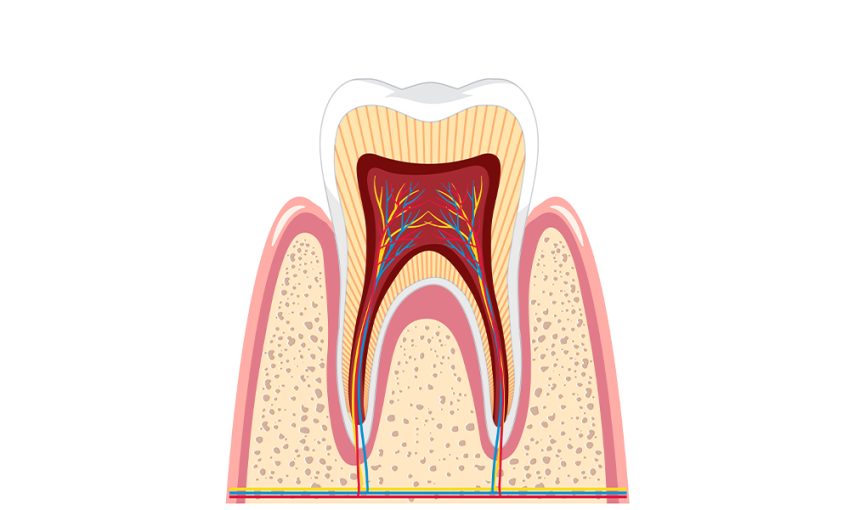for root canal therapy near me. And if you’re in Crestwood, it’s good to know that this treatment can actually save your natural tooth and protect your long-term dental health.
Root canals might have a scary reputation, but the truth is, they’re not painful. They relieve pain. And more importantly, they stop infection before it spreads.
So, What Is Root Canal Therapy?
At its core, root canal therapy treatment eliminates the damaged or highly infected pulp in your tooth. That’s the soft tissue that lives in the center, holding nerves and blood vessels. When that pulp gets inflamed—due to decay, trauma, or deep cavities—it can cause real discomfort.
In place of pulling the tooth, a root canal saves it. The dentist eliminates the infected pulp, cleans and disinfects the area, and seals it. You keep your natural tooth and stop the pain.
Signs You Might Need a Root Canal
Don’t ignore the warning signs. If you notice any of these, it’s time to get checked out:
- Throbbing or persistent toothache
- Sharp pain when biting or chewing
- Sensitivity to hot or cold (lingering after the source is gone)
- Darkening of the tooth
- Swollen or tender gums near the tooth
- Pimple-like bump on the gum
Even if the pain stops, don’t assume the problem’s gone. Sometimes nerves die and stop hurting, but the infection continues. That’s why seeing a dentist in Crestwood early can prevent bigger issues later.
Why Saving the Tooth Matters
You might wonder—why not just pull the tooth?
Here’s the deal: nothing beats your natural tooth. Replacing it with a bridge or implant takes more time, more money, and isn’t quite the same. Keeping your own tooth maintains the structure of your jaw, keeps surrounding teeth in place, and allows you to chew naturally.
Top reasons to save your tooth:
✔ Natural look and function
✔ Prevents shifting of nearby teeth
✔ Avoids jawbone loss
✔ Keeps your bite strong
✔ Less expensive than replacement options
What Happens During Root Canal Treatment?
It may sound complicated, but the process is straightforward. Most procedures are done in one or two visits.
Step-by-Step:
- Numb the Area
Local anesthesia keeps you comfortable. You’ll feel pressure, not pain.
- Access the Pulp
The dentist makes a small opening to reach the inner pulp.
- Clean the Inside
Special tools remove infected tissue and shape the canals.
- Disinfect and Fill
Once clean, the space gets filled with a rubbery material to seal it.
- Final Restoration
Usually, a crown is placed on top to protect the tooth and restore function.
Afterward, your tooth works like normal again, without the pain.
Common Questions People Have
Q: Does it hurt?
A: Nope! Most people say it’s no worse than getting a filling. It actually relieves pain from infection.
Q: How long does it take?
A: It depends on the tooth and the damage, but usually 60–90 minutes per visit.
Q: Will I need a crown?
A: Often, yes—especially for molars or teeth that take pressure while chewing.
Benefits of Root Canal Therapy
Aside from pain relief, root canal therapy services offer big benefits. You’re treating the problem at its source, not just covering it up.
Why people choose root canals:
- Stops infection from spreading
- Saves your natural tooth
- Restores function and strength
- Reduces the need for future dental work
- Offers lasting results with proper care
Aftercare Tips for a Healthy Recovery
Once the procedure is done, you’ll want to take it easy. Most people return to normal activities within a day or two. Here’s how to care for your tooth afterward:
Do:
- Take over-the-counter pain meds if needed
- Eat soft food items for the first 24 hours
- Keep up with brushing and flossing
- Return for your crown placement (if advised)
Don’t:
- Chew on the treated tooth until it’s fully restored
- Skip your follow-up visit
- Ignore new pain or swelling
How Long Does a Root Canal Last?
Done right, a root canal can last a lifetime. The key is keeping your teeth clean, attending regular checkups, and protecting the restored tooth.
Teeth that receive prompt care and proper crowns often last as long as healthy, untreated teeth.
Root Canal vs Extraction: What’s Better?
If the tooth can be protected, root canal wins. Extraction may be needed in some cases—like if the tooth is too damaged—but it’s a last resort.
Here’s a quick comparison:
| Option | Pros | Cons |
| Root Canal | Keeps natural tooth, faster healing | May need a crown |
| Extraction | Removes infection fully | Leads to gaps, shifting, bone loss |
Choosing to save the tooth usually leads to better long-term results and less dental work down the line.
A Real-Life Example
James, a 37-year-old from Crestwood, had a lingering ache in his lower molar. He avoided the dentist for months until the pain got unbearable. After getting a root canal, he said the relief was instant.
“I was scared it would hurt, but it didn’t,” James said. “Now I can eat without pain, and I still have my tooth.”
Stories like James’ are common—and show that waiting only makes things worse. The earlier you treat it, the better the outcome.
Final Thought
Root canals have come a long way. They’re safe, effective, and—most of all—they save your teeth. Don’t let fear keep you from getting the care you need.
Whether you’re dealing with pain now or just curious about your options, talking with a trusted team like Family Dental Care – Crestwood can help you take the next step with confidence.


